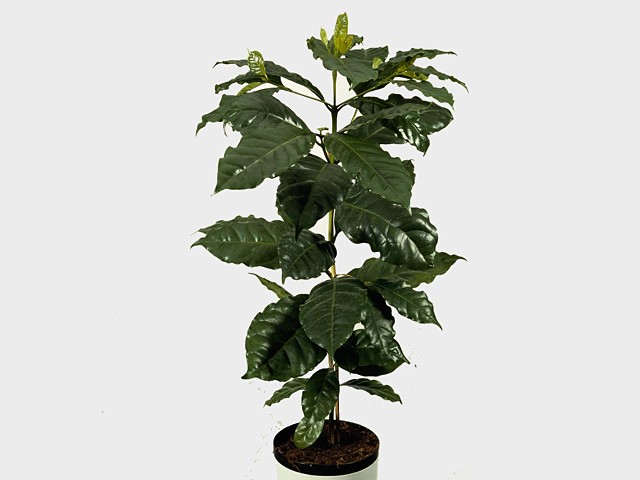Coffea arabica

| Leaf tip | Pointed/acute |
| Fruit type | Berry |
| Leaf type | Foliage leaf |
| Structure (tissues) | Woody |
| Leaf surface | Glossy |
| Leaf division | Simple |
| Plant, growth type | Erect |
Coffea arabica, also known as coffee, is a popular and widely consumed beverage around the world. This evergreen plant belongs to the family Rubiaceae and is native to the highlands of Ethiopia. Its scientific name, arabica, might suggest its origins in the Arabian Peninsula, but it actually refers to the Arabic trade network that helped spread coffee cultivation.
One of the distinctive features of Coffea arabica is its pointed or acute leaf tip. The leaves are typically glossy and have a simple leaf division, meaning they are not divided into separate leaflets. Instead, each leaf is a single piece of foliage leaf. This feature gives the plant an elegant and streamlined appearance.
Coffea arabica produces berries as fruits, which are commonly referred to as coffee cherries. These berries are a crucial component in the coffee-making process. The coffee cherries contain two seeds, commonly known as coffee beans, which are extracted and used to make the beloved beverage. Arabica beans are known for their rich and complex flavors, making them highly sought after by coffee enthusiasts.
In terms of structure, Coffea arabica is classified as woody. The plant has a strong and sturdy stem, allowing it to grow erectly. This growth type is essential for the proper development and support of the coffee plant, as it needs to support the weight of the leaves, flowers, and fruits.
Coffee cultivation requires specific conditions for optimal growth. Coffea arabica thrives in tropical climates with temperatures ranging from 60 to 70 degrees Fahrenheit (15 to 24 degrees Celsius). It prefers altitudes between 2,000 to 6,000 feet (600 to 1,800 meters) and needs well-draining soil to prevent root rot.
Due to its widespread popularity, Coffea arabica plays a significant role in the global economy. Coffee production and trade provide livelihoods for millions of people worldwide, especially in countries such as Brazil, Colombia, and Ethiopia. The demand for high-quality arabica beans continues to grow, leading to continuous innovations in cultivation techniques, roasting processes, and brewing methods.
In conclusion, Coffea arabica, or coffee, is a fascinating plant with distinct characteristics. It has pointed leaves, glossy foliage, and woody structure. Its fruit, the coffee cherry, contains the highly prized arabica beans, renowned for their exceptional flavor. Coffee cultivation requires specific conditions, and its global presence contributes significantly to the economies of many countries. So, the next time you take a sip of your favorite coffee, remember the intricate journey of Coffea arabica that brings this delightful beverage to your cup.
Market availability index by month:
| Jan. | Feb. | Mar. | Apr. | May | Jun. | Jul. | Aug. | Sep. | Oct. | Nov. | Dec. |
|---|---|---|---|---|---|---|---|---|---|---|---|
| 3 | 3 | 3 | 3 | 3 | 3 | 3 | 4 | 3 | 3 | 3 | 3 |